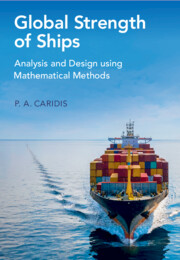Refine search
Actions for selected content:
2 results
12 - Ship Structural Reliability Theory and Applications
-
- Book:
- Global Strength of Ships
- Published online:
- 20 March 2025
- Print publication:
- 03 April 2025, pp 559-627
-
- Chapter
- Export citation

Global Strength of Ships
- Analysis and Design using Mathematical Methods
-
- Published online:
- 20 March 2025
- Print publication:
- 03 April 2025
